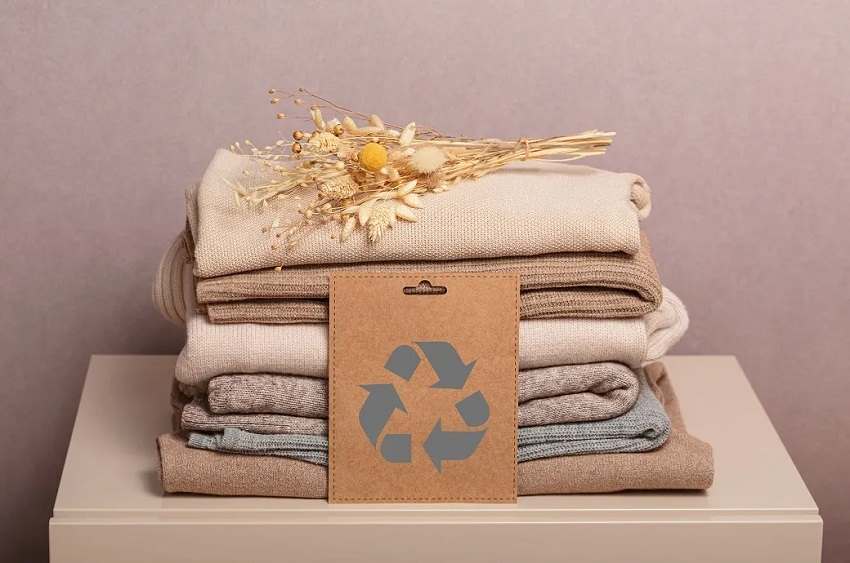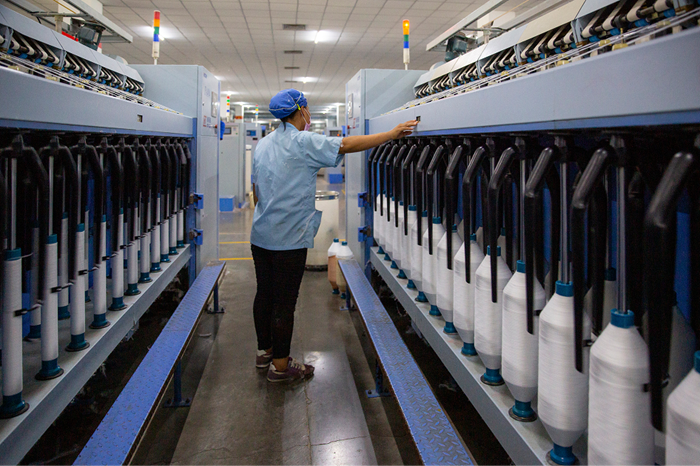
A new landmark report released by the Circular Fashion Innovation Network (CFIN) outlines major strides and a comprehensive roadmap for accelerating the UK's transition towards a circular fashion ecosystem. The "CFIN May 2025 Report" reveals achievements in mobilizing the industry, identifies substantial growth opportunities in circular business models, sustainable manufacturing, and recycling infrastructure, and calls for continued collaboration and investment to position the UK as a global leader in sustainable fashion.
The CFIN, a collaboration between the British Fashion Council (BFC), UK Fashion & Textile Association (UKFT), and Innovate UK, has successfully convened over 250 organisations, representing 42 per cent of UK’s clothing sales by volume, to drive practical, market-driven solutions for circularity.
"CFIN has redefined how our industry approaches sustainability by creating practical pathways rather than theoretical ideals," said Caroline Rush CBE, Former CEO of the British Fashion Council. "What makes this network extraordinary is its ability to unite stakeholders from across the entire value chain, breaking down traditional silos and fostering genuine collaboration."
Major achievements and roadmap
The report highlights several transformative outputs, including:
- A national textile recycling infrastructure plan providing a roadmap to process the 1.3 million tonnes of post-consumer textiles generated annually in the UK. This plan focuses on building advanced sorting and fibre-to-fibre recycling infrastructure, investing in automation, developing workforce skills, and expanding market capacity for recycled products.
- An industry-supported Extended Producer Responsibility (EPR) framework for textiles. This framework is built on mandatory participation, variable eco-modulated fees to reward sustainable practices, and ring-fenced tax revenue for circular fashion innovation and infrastructure.
Circular business models
While 81 per cent of fashion organisations surveyed include circularity in their five-year strategies, a "intention-action gap" exists, with 63 per cent of customer-facing circular initiatives remaining in pilot phases. The report identifies strong growth potential:
- Resale: Shows promise for mass market and premium retailers, with 78 per cent of initiatives currently in pilot.
- Repair: Demonstrates strong adoption in premium sectors (57 per cent of initiatives) and boasts the highest customer participation rate at 25 per cent.
- Takeback: Presents significant potential for mid-market retailers (38 per cent adoption) due to higher production volumes.
- Circular design: The most prevalent initiative (51 per cent adoption), though definitions vary.
However, the report notes that 40 per cent of UK brands struggle with effectively communicating circularity, a critical barrier to scaling these models.
For example, Circular Threads launched in 2021 by Anoli Mehta, is the UK's first resale platform for pre-loved South Asian clothing. Mehta's research found that 90 per cent respondents wanted to sell their outfits but lacked a platform. The company has seen organic growth through its online platform and a North-West London studio with an innovative eight-week rotational stock scheme. "The spotlight is completely on Western wear and UK high street retailers, but a whole industry is being ignored," Mehta says, highlighting a significant sustainability gap.
Reshoring and technological advancement
CFIN's work demonstrates concrete opportunities for reshoring manufacturing, with a feasibility study involving retailers with a combined turnover of £26.1 billion identifying potential in knitwear, jersey, printing, and Cut-Make-Trim operations. Key findings include:
- Current UK sourcing is mainly for niche, agile, or "test-and-react" demands, with garment printing being the most common activity.
- Key motivators for UK sourcing are quality, speed to market, and capacity availability.
- Successful pilot projects using AI and onshore finishing have shown faster turnaround times and reduced fabric waste.
For example, an ongoing pilot between River Island and LaundRe is showcasing a circular, onshore production model for denim finishing. LaundRe's local, responsive approach allows unwashed jeans to be finished in the UK using laser-designed patterns and sustainable processing. This model offers rapid design-to-shelf times (weeks instead of months), low-volume flexibility, reduced carbon footprint, and full transparency.
Recycling a multi-billion pound opportunity
The National Textile Recycling Infrastructure Plan aims to manage the 1.45 million tonnes of post-consumer textiles generated annually in the UK. A socio-economic impact study for a proposed National Textile Recycling Hub, involving three automated sorting and pre-processing plants (ATSPs) and one chemical recycling plant, demonstrates significant potential benefits.
Table: Socio-economic impact of national textile recycling hub (modelled)
|
Phase & Period |
Investment in UK Economy |
Total GDP Contribution (p.a. for operational) |
Employment (Job Years / Jobs) |
|
Development Phase (2025-2028) |
£58 million |
£46 million (total) |
620 job years |
|
Operational Phase (fully by 2031) |
- |
£53 million (per year) |
720 jobs |
Source: CFIN May 2025 Report
As per Adam Mansell, CEO of UK Fashion and Textile Association, their work has revealed numerous opportunities for reshoring manufacturing and developing domestic recycling infrastructure—turning environmental imperatives into economic advantages for the UK.
Driving innovation
The CFIN Novel Tech Showcase in March 2025 connected innovative startups with investors and corporate partners, focusing on end-of-life solutions, repair, technology for circularity, and re-commerce. Some emerging technologies identified were: automation and AI in resale and sorting, Digital Product Passports (DPPs), forensic tools for supply chain authentication, and advanced fibre-to-fibre recycling.
For example, London-based startup Amphico, born out of the Royal College of Art, has developed Amphitex (a PFAS-free waterproof, breathable membrane) and Amphicolor (a waterless textile dyeing solution). Despite significant brand interest, challenges to scaling include the gap between interest and commitment, capacity constraints, and extensive documentation demands. And as Claire Miller, Principal Textile Designer at Amphico, advises brands, "Take the leap. Move from conversation to action. Integrate these materials into actual products, even if it's a small run."
Overcoming investment hurdles
The report also highlights a £700 billion global opportunity for circular business models by 2030. However, institutional investors remain cautious due to a lack of proven returns and insufficient standardised reporting. The research debunks several investment myths, for instance:
Myth: Circular fashion is just a niche market.
Reality: The global second-hand apparel market reached £100-120 billion in 2022 and is projected to grow to £367 billion by 2028-2029. Rental fashion is valued at £6.3 billion (2023) and expected to reach £7-8 billion by 2026. The Depop marketplace, acquired by Etsy for £1.63 billion, serves as a landmark exit validating the sector's financial value.
A call for sustained action
The report concludes with a strong call for continued government and industry support to maintain the momentum achieved. "The frameworks and collaborative networks established through CFIN provide an essential foundation for continued progress—helping to position the UK as a leader in circular innovation, while creating new opportunities for growth and economic resilience," says Tom Fiddian, Head of AI & Data Economy Programmes at Innovate UK.
CFIN proposes several steps, including a CBM Accelerator programme for brands, further testing of automation in manufacturing, modelling costs for the recycling infrastructure plan, and working with the government to advance EPR legislation. The message is clear: the UK fashion industry has the tools and the collective will to forge a circular future, but sustained investment and collaborative action are paramount to realizing this transformative vision.












